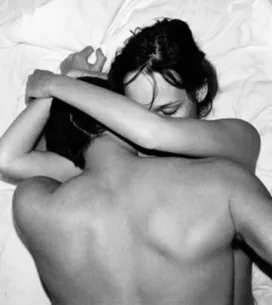Erotism and pornography: what’s the difference?
Sometimes a distinction is made between erotic literature and pornography. The difference is often negligible and the genres often merge.
- Ordinarily speaking, erotic literature is suggestive and often accompanied with romance or humour. It plays on the symbolic meanings of situations to stimulate sexual desire.
- Pornographic literature is said to be more direct and no-holds-barred. It is exposed sexuality in the first degree, with a plot about sex and very little else, and its purpose is as a turn-on.
Naughty tales
The roots of erotic literature can be traced back to the 12th century. It was found in poems and songs that respected the codes of courtly love. During the Renaissance period, erotic literature continued to circulate but was perceived as immoral. The freer spirit of the 18th century saw it establish its worth, however, and people read about the art of seduction in skillful and allusive writing.
Sadist literature
The author of the 18th century to remember is the controversial Marquis de Sade, whose work saw women reduced to objects. It was censored for a long time, but was reestablished in the 20th century. Justine, The Misfortunes of Virtue and 120 days of Sodom are tales that explore extreme forms of sexuality, including violence. Nonetheless, behind Sade's pornographic content and praise for vice was hidden a scathing critique of the society he lived in. In the 19th century, erotic literature both fascinated and repulsed people. Writers published their works in Belgium to evade the censure in force (principally from Orthodox Christianity).
With the advent of psychoanalysis in the 20th century, erotic lit found its place. The way of thinking about sexuality evolved during the course of different events such as the publication of the Kinsey reports on human sexual behaviour, the rise of feminism and the AIDS pandemic.
Publishers and erotic literature
Today erotic literature does not necessarily mean fiction. It can appear in the form of guides or historical works of art with a touch of humour. Publishers generally adopt two different strategies:
- Some publish erotic literature in a special section, under which there are a number of quite daring erotic works in various different forms (especially sex guides.) These attract readers in search of sensuality with a hint of erotism, often not restricting their representation of sex to one way, and providing entertaining, practical advice on sex.
- Other publishers specialise in erotic and provocative literature, even involving themselves in controversy and provocation by raising taboo subjects and ways of arousing readers (especially men) through sometimes extreme pornography, fetishism and voyeurism of all kinds.
More and more sex in literature
Erotic scenes in fiction have become commonplace. Current authors no longer hold back the intimate details of their characters' sex lives. Whether it's done subtly or with humour, almost all contemporary authors write about sex. Some are overtly erotic, others more discreet; what is important is how sex is portrayed. In contemporary literature, it has become as essential an element as identity, life and death.
Boom in erotic lit
Erotic literature has only really been accessible in the last 20 years and many have tried it. With the rise of the net, specialist sites are also booming. Some specialised sites have seen the other side of the coin, where easily accessible and widely read material has lost some of its spice and is no longer subject to censorship and enveloped in controversy. This hasn’t prevented a diverse readership from emerging, including couples, young people and increasing numbers of women.













